Forklift battery: The powerhouse of your electric forkliftForklift battery: The powerhouse of your electric forklift
Reading Time: 4 minutes 45 seconds
Table of Contents
SummaryThis article discusses electric forklift batteries. Here you will learn the weight, sizes and types of forklift batteries, their common maintenance techniques and expected lifespan. Introduction
Electric forklifts are one of the most popular forklift types. Naturally, the battery is the most crucial component in an electric forklift. Forklift batteries can vary in shape, size, capacity, and type. Choosing the right battery can ensure continuous operation. It is important to understand their characteristics and differences and select the right one for your forklift. 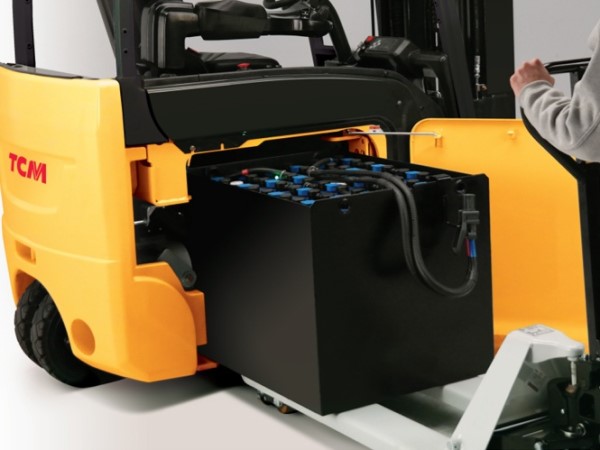
Figure: A typical forklift battery in an electric forklift Types of forklift batteryIndustrial forklift batteries are mainly two types:
Lead-acid batteries: Lead-acid batteries are the oldest type of battery still in use today. They were invented in 1859 by French physicist Gaston Planté. They are still the most popular batteries for automotive applications, especially for forklifts. Lead-acid batteries work uses a chemical reaction between lead and sulfuric acid to create electrical energy. An electric forklift can use three types of Lead-acid batteries:
Here are the pros and cons of Lead-acid batteries: Pros:
Cons:
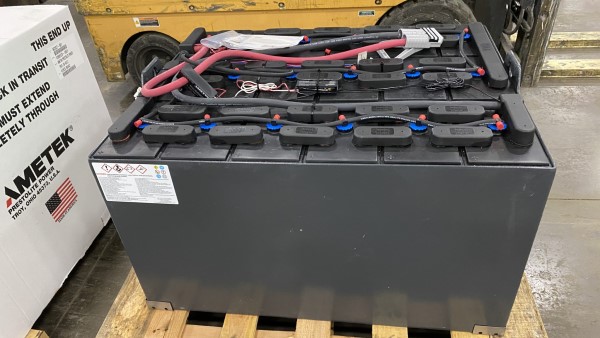 Figure: A Lead-acid battery
Lithium-ion batteries: These batteries use lithium ions as electrolytes. It is a newer technology, first used in the early 1990s. Lithium-ion batteries can be of many different types. The most popular of them is the LFP or Lithium Iron Phosphate. They are popular in electronic devices, such as laptops and cell phones, because they are lightweight and can hold a charge for a long time. Recently, Lithium-ion batteries became a popular option for electric forklifts. Pros:
Cons:
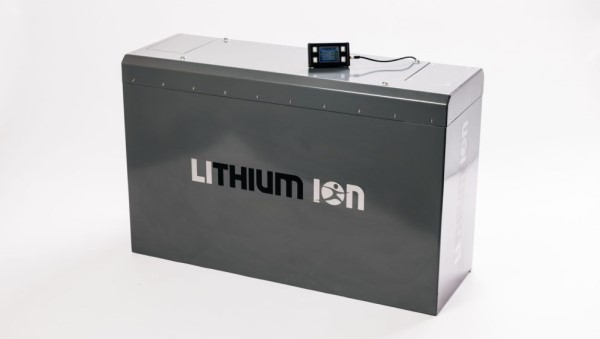 Figure: A Lithium-ion forklift battery
Apart from these two types, Nickel Cadmium batteries are also used. They are very costly and difficult to handle. However, they are very reliable and suitable for some specific environments. Sizes of forklift batteryElectric forklift batteries are available in four sizes. They are:
A typical electric lift truck uses either a 36V or 48V battery. These batteries are most suitable for Narrow Aisle Forklifts, 3 Wheel Sit-downs, and Counterbalance Forklifts. 24V is mostly used in End and Center Riders, Walkie Stackers, and Walkie Pallet Jacks. 80V batteries are uncommon and only used in Large Counterbalance Forklifts for heavy-duty operation. How much does a forklift battery weigh?Depending on the capacity and type, the weight of a battery varies widely. Lead-acid batteries are heavier, weighing from 800 to 3500 lbs. While this may sound like a disadvantage, it is actually quite useful. Forklifts lift heavy objects. To maintain balance, they use counterweights. In most cases, batteries provide that counterweight.
Lithium-ion batteries are much lighter than Lead-acid batteries. They weigh anywhere between 400 to 2,500 lbs. Since they are lightweight, forklifts with Lithium-ion batteries use extra metal bars as counterweights. When should you add water to a forklift battery?Typically forklift batteries require top-off water once a week. We recommend topping off the battery only after charging. The fluid inside the battery expands during charging. Topping off before charging will cause the fluid to overflow. Some acid will be lost with the fluid, decreasing battery capacity. 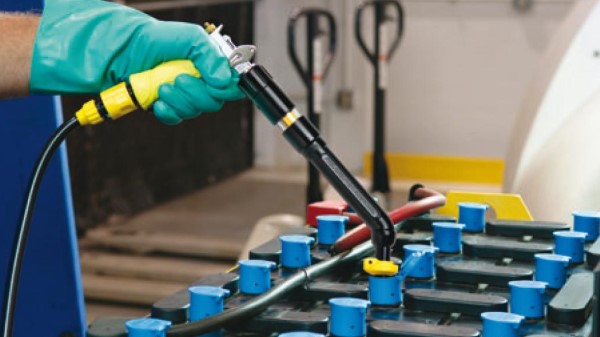 Figure: Watering forklift batteries
Please note that battery plates remain submerged in the fluid before charging. If not, the battery will dry out due to overheating and lose capacity. Add enough water to drown the plates before charging, but do not top off. You should top-off when the battery is fully charged and cooled off. How to charge a forklift battery?
Charging is a crucial part of forklift battery maintenance. How you charge your battery determines how long it will last. Below is a step-by-step guideline for charging your battery:
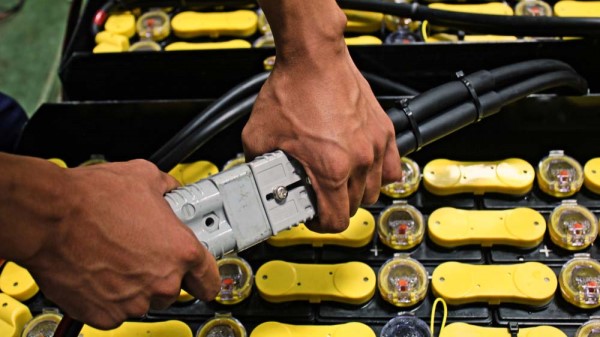 Figure: Charging your forklift battery requires care and caution
Lift Parts Warehouse has a wide collection of Single Phase, Three Phase, Multi-voltage, and Multi-shift chargers for your electric forklift. Please visit this page to buy the charger you need. How long do forklift batteries last?The lifespan of these batteries varies according to type and usage. Lead-acid batteries have the shortest lifespan among all types. They have 8 hours charging period and 8 hours cooling period. Hence, they are only used for one shift every day. In such a case, a typical Lead-acid battery should last for five years or 1500 charging cycles.
Lithium-ion batteries take only 2 hours to charge and do not need any cooldown. Hence they are sometimes used for two shifts a day. If used for only one shift per day, they can last for up to 10 years or 3000 cycles. However, using them for two shifts decreases their lifespan. In this case, they complete the 3000 charging cycles sooner than ten years. Takeaways
|

First Order Special
GET 5% OFF
On Your First Purchase!
Use this discount code
GET5%OFF

